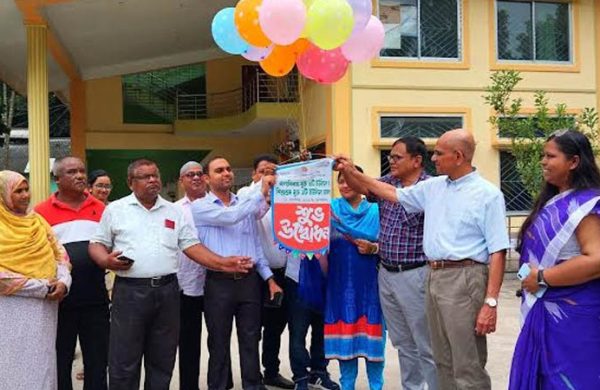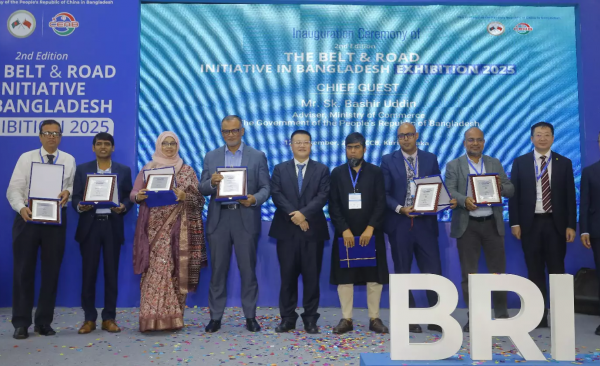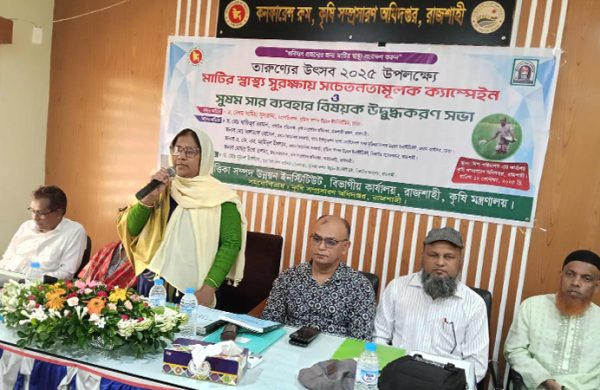Policymakers Should Frequently Review Unemployment Problem
- Update Time : Tuesday, June 25, 2024

—Dr Nasim Ahmed—
The major governance pitfalls being encountered in Bangladesh in the socio-economic areas include poverty, unemployment, income inequality, lack of access to quality education and training, insufficient health care and infrastructure facilities, labour rights, social protection problems, gender inequality, and energy constraints. Among these hindrances, unemployment appears to be ever-persistent and poses a crucial challenge for policymakers. Unemployment refers to a situation where individuals are unable to find suitable employment.
The unemployment rate is a key indicator used to measure this phenomenon. According to the Quarterly Labour Force Survey 2024 of the Bangladesh Bureau of Statistics, the total unemployed population was 2.59 million during January-March 2024, while it was 2.47 (provisional) and 2.58 million in 2023 and 2022 respectively.
The unemployment rate was 3.51% in the first quarter (January-March) of 2024 and 3.36% in 2023, marking a rising trend. The percentage is not small considering the country’s population. If this situation had prevailed in any developed country, there would have been an instant reaction from the citizens.
Political scientists and economists tend to attribute several interrelated factors to persistent unemployment problems in the country. The demographic pressure, particularly the rapidly growing youth population, creates a challenge in generating enough jobs to absorb new candidates. The country’s employment opportunities are considerably dependent on agriculture.
Sluggish growth of manufacturing and industrial sectors results in fewer job opportunities beyond agriculture. Meanwhile, the quality of education and skill development in the country often do not match the labour market demand.
This mismatch leads to unemployment among graduates who lack relevant skills. The informal sector suffers from job security, benefits, and legal protections and often offers low wages and poor working environment, contributing to persistent underemployment and poverty.
Then, inadequate infrastructure in sectors like transportation, energy, telecommunications, etc. hinders the growth of industries that could provide more jobs. Lack of infrastructure and higher cost of doing business shrinks the opportunity of attracting foreign direct investment, which could stimulate job creation in sectors like industries, manufacturing, and services. The advent of the fourth industrial revolution (Industry 4.0) can displace jobs in sectors where automation, digitisation, and information technologies are increasingly adopted.
This shift requires investment in re-training and upskilling workers to match new demands. Moreover, changes in the global market, commodity prices, and international trade policies can impact industries reliant on exports, potentially affecting employment levels. Failing to combat unemployment can have many negative consequences, affecting the individuals and the state. Unemployment causes a loss of potential output and productivity, reducing the country’s overall economic growth and development.
Unemployed individuals and their families often face poverty and financial insecurity, as they lack a stable income to meet basic needs. This can contribute to social unrest and tensions as frustrated individuals may be compelled to engage in illegal activities.
Higher unemployment may strain public finances and social welfare programmes. The government may struggle to implement effective policies to combat unemployment, including on-going skills training programmes and job creation initiatives. Youth unemployment can lead to disillusionment and dissatisfaction among young people. Skilled youth are prone to leave the country for better job opportunities abroad, contributing to the ‘brain drain’ phenomenon that further depletes local talent and expertise. Unemployment is associated with negative health outcomes due to increased stress, lack of access to health care, unhealthy coping mechanisms, and reduced access to healthcare services.
Prolonged unemployment can result in a lack of skill development and experience among the workforce in the country, hindering its future economic competitiveness. It may cause delay in economic recovery following economic downturns or crises, as households and businesses will struggle with reduced spending capacity. The government has launched the National Human Resources Development Fund, formulated the National Skills Development Policy 2022 and National Action Plan 2022-2027 for skills development, and created special economic zones for enhancing employability.
The impact of these initiatives needs to be evaluated and reviewed regularly. Apart from these, ministries and divisions like Youth and Sports, Women and Children Affairs, Social Welfare, Technical and Madrasah Education Division, Ministry of Industries, Ministry of Labour and Manpower, Ministry of Expatriates’ Welfare and Overseas Employment have customary policies and programmes for enhancing the prospect for employment at home and abroad.
However, the policy makers should give renewed emphasis on the country’s unemployment issue. In order to solve it, they need adopt multifaceted, continuous and focused approaches such as (a) improving the quality of education and expanding vocational training programmes at all levels; (b) creating and enabling environment for small and medium enterprises through easier access to credit, business incubators, and regulatory reforms; (c) investing in infrastructure and industry projects that create jobs; (d) implementing labour market reforms that strike a balance between protecting labour rights; (e) strengthening social safety nets to provide temporary income support for the unemployed; (f) incentivising foreign investors to set up businesses in the country; (g) facilitating efforts to formalise the informal sector through regulatory reforms and incentives; (h) ensuring coordination among government agencies, private sector, NGOs and civil society to implement coherent and effective employment policies; (i) encouraging the private entrepreneurs to invest on a larger scale for industrialisation and manufacturing; and (j) regularly monitoring and evaluating the impact of employment interventions to adjust policies and programmes.
____________________________________
The writer is an Associate Professor, Bangladesh Institute of Governance and Management (BVIGM).



















